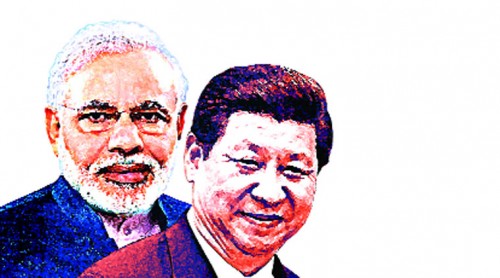Indian industry must seize the opportunities the PM’s visit to China promises to create.

India and China have entered a new phase of their bilateral relationship as new leaders have assumed charge in both countries over the last two years. As Prime Minister Narendra Modi travels to China, a definitive agenda for mutual economic engagement is being shaped, supporting the developmental aspirations of the two largest and fastest-growing emerging economies. Indian industry identifies multiple new opportunities arising from such a shift, and is acting quickly and strategically to leverage the emerging sectors of cooperation.
President Xi Jinping’s visit to India last September, during which the two countries signed up for a “closer developmental partnership”, promised commercial agreements worth about $20 billion. This is a big leap from the Chinese investment presence in India of less than $1bn between 2000 and February 2015. China would step into railways, sustainable urbanisation and industrial parks. There is interest in India’s high-speed rail project, railway station modernisation and the smart city initiative.
The PM’s visit will build substantially on these agreements. Business deals worth another $20bn in infrastructure and manufacturing sectors are likely to be pledged. Such interactions are important, as the bilateral trade imbalance has ballooned out of proportion and must be addressed through strong action by government and industry on both sides.
According to Indian data, total bilateral trade reached $72bn in 2014-15, with India’s exports to China at $12bn and imports crossing $60.4bn. India’s exports fell from a peak of $18bn in 2011-12 to $12bn in 2014-15. During the last year, our exports contracted by 20 per cent from $14.8bn to $12bn. At the same time, our imports from China grew by almost 20 per cent in the last year from $51bn to $60bn, the highest ever.
It is of great concern that the trade deficit has expanded to $48bn — four times India’s exports and representing a third of India’s total trade deficit. China recognises that such an unequal trading relationship cannot be sustained over the long term. CII analysis reveals that India would be among the fastest-growing destinations for Chinese goods as our growth rate gathers momentum, and India is likely to emerge as one of China’s top four trade partners by 2018. An unequal trade relationship would detract from this.
The nature of goods traded is also not commensurate with our global strengths. India’s exports include cotton, iron ore, organic chemicals and mineral fuels, while imports include electronic and electrical equipment, machinery, fertilisers, etc. High-tech goods constitute almost half of India’s imports from China.
The Indian government has outlined a three-pronged agenda for increasing Indian exports to China. First, it aims to expand market access for commodities of interest to India. These include IT/ ITES, food products and agricultural produce, pharmaceuticals and auto components. The CII feels that Indian industry needs to step up its engagement in these areas and understand the market for these products more holistically.
Second, we must look at new areas of export from India, such as tourism, media and entertainment, and others. Indian industry should explore Chinese markets more aggressively as China is one of the world’s top importing nations, importing about $2 trillion from the rest of the world. India’s figure, at $12bn, is low. The CII has accentuated services exports and believes the recent agreement for co-production of films is a breakthrough initiative.
Third, the government aims to promote Chinese investments in select sectors with high import dependency from China. China has set up manufacturing bases in countries like Malaysia and Vietnam. It can explore similar opportunities under the “Make in India” programme. The CII has participated in business events in China to build awareness on the “Make in India” initiative, and we are encouraged by the strong response.
The CII has undertaken events to promote more awareness in India on doing business with China, particularly in lower-tier and smaller industrial hubs of India, as well as business networking meetings in China. Information asymmetries and language issues inhibit Indian exporters from tapping opportunities in China. Some common challenges faced by Indian industry relate to preference given in contracts to Chinese state-owned enterprises (SOEs). Challenges in staff mobility due to the “hukou” registration system mean that local offices have to be set up at each business location.
In the pharma sector, Chinese companies are better able to manage regulatory processes, and India’s penetration is low. There is a long registration and approval process. Indian companies must focus on specific molecules with low competitiveness intensity in China, such as cancer drugs. There is also a huge opportunity for Indian companies in media and entertainment, such as in pre- and post-production of movies, co-production and animation, among others.
Modi’s visit to China would be a landmark in the bilateral economic partnership. Indian industry looks forward to working with the governments of the two countries to build a mutually supportive and sustainable economic equation.
The writer is director general, Confederation of Indian Industry.